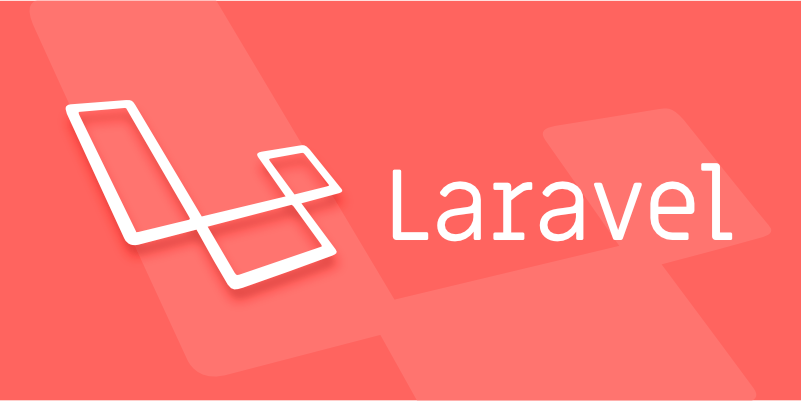The most common way to add new packages to Laravel projects is through Composer. 1. First search to confirm the package name and applicability, such as searching for "laravel permission package" on Packagist or Google to find spatie/laravel-permission. 2. Run the installation command such as composer requires spatie/laravel-permission in the project root directory. Composer will automatically download the package and its dependencies and update the relevant files. 3. If using Laravel 5.5 versions or packages before do not support automatic discovery, you need to manually register the service providers in the providers array in config/app.php. 4. To customize configuration, view, or database migration, execute php artisan vendor:publish to publish resources, and run php artisan migrate to process the migration files. In addition, please note that you can specify the version number, use the --dev parameter to install the development dependency, and then use the composer update to update the package.

The most common way to add a new package to a Laravel project is through Composer. Composer is a dependency management tool for PHP, and Laravel itself manages extension packages based on it.

1. Search and confirm the package name
Before installing, it is best to confirm that the package you are using exists and is suitable for the current Laravel version. You can search on Packagist or Google, such as searching for "laravel permission package", and you may find popular packages like spatie/laravel-permission .
Once the appropriate package is found, copy its Composer installation command, usually in a format similar to this:

composer requires vendor/package-name
2. Use Composer to install the package
Open the terminal, go to the root directory of your Laravel project, and run the command you just copied. For example:
composer requires spatie/laravel-permission
Composer will automatically download this package and other libraries it depends on, and update vendor/ directory and composer.lock file.

Note: Some packages may require additional configuration steps, such as service provider registration or publishing configuration files. This information is usually explained in the package documentation.
3. Check whether you need to register a service provider (Service Provider)
In Laravel 5.5 and later, most packages support auto-discovery, which means that after the Composer installation is completed, the service provider will automatically register without manual operations.
But if you are using an older version of Laravel, or if a package does not support automatic discovery, you will need to manually register the service provider.
Open config/app.php and add the corresponding class name to providers array, for example:
Spatie\Permission\PermissionServiceProvider::class,
4. Publish configuration files and migration files (if required)
Many packages provide some customizable configurations, views, database migration and other resources. You need to "post" them to your project via the Artisan command.
Common commands are:
php artisan vendor:publish
If no parameters are added, all available resources will be listed, and you can select the corresponding number. You can also directly specify the provider or tag, for example:
php artisan vendor:publish --provider="Spatie\Permission\PermissionServiceProvider"
If the package contains database migrations, remember to run:
php artisan migrate
Tips
- Version control : You can specify the version number during installation, such as
composer require vendor/package:1.0.0. - Development dependencies : If you are just using packages in the development environment, you can use the
--devparameter, such ascomposer require phpunit/phpunit --dev. - Update package : If you want to update the package in the future, just run
composer update vendor/package.
Basically these are the steps. Although the process seems a bit too many, most of the time, you only need a composer require to handle it. The key is to look at the documentation and don't miss the release configuration or migration step.
The above is the detailed content of How to add a new package to Laravel using Composer?. For more information, please follow other related articles on the PHP Chinese website!

Hot AI Tools

Undress AI Tool
Undress images for free

Undresser.AI Undress
AI-powered app for creating realistic nude photos

AI Clothes Remover
Online AI tool for removing clothes from photos.

Clothoff.io
AI clothes remover

Video Face Swap
Swap faces in any video effortlessly with our completely free AI face swap tool!

Hot Article

Hot Tools

Notepad++7.3.1
Easy-to-use and free code editor

SublimeText3 Chinese version
Chinese version, very easy to use

Zend Studio 13.0.1
Powerful PHP integrated development environment

Dreamweaver CS6
Visual web development tools

SublimeText3 Mac version
God-level code editing software (SublimeText3)
 Working with pivot tables in Laravel Many-to-Many relationships
Jul 07, 2025 am 01:06 AM
Working with pivot tables in Laravel Many-to-Many relationships
Jul 07, 2025 am 01:06 AM
ToworkeffectivelywithpivottablesinLaravel,firstaccesspivotdatausingwithPivot()orwithTimestamps(),thenupdateentrieswithupdateExistingPivot(),managerelationshipsviadetach()andsync(),andusecustompivotmodelswhenneeded.1.UsewithPivot()toincludespecificcol
 Sending different types of notifications with Laravel
Jul 06, 2025 am 12:52 AM
Sending different types of notifications with Laravel
Jul 06, 2025 am 12:52 AM
Laravelprovidesacleanandflexiblewaytosendnotificationsviamultiplechannelslikeemail,SMS,in-appalerts,andpushnotifications.Youdefinenotificationchannelsinthevia()methodofanotificationclass,andimplementspecificmethodsliketoMail(),toDatabase(),ortoVonage
 Understanding Dependency Injection in Laravel?
Jul 05, 2025 am 02:01 AM
Understanding Dependency Injection in Laravel?
Jul 05, 2025 am 02:01 AM
Dependency injection automatically handles class dependencies through service containers in Laravel without manual new objects. Its core is constructor injection and method injection, such as automatically passing in the Request instance in the controller. Laravel parses dependencies through type prompts and recursively creates the required objects. The binding interface and implementation can be used by the service provider to use the bind method, or singleton to bind a singleton. When using it, you need to ensure type prompts, avoid constructor complications, use context bindings with caution, and understand automatic parsing rules. Mastering these can improve code flexibility and maintenance.
 Strategies for optimizing Laravel application performance
Jul 09, 2025 am 03:00 AM
Strategies for optimizing Laravel application performance
Jul 09, 2025 am 03:00 AM
Laravel performance optimization can improve application efficiency through four core directions. 1. Use the cache mechanism to reduce duplicate queries, store infrequently changing data through Cache::remember() and other methods to reduce database access frequency; 2. Optimize database from the model to query statements, avoid N 1 queries, specifying field queries, adding indexes, paging processing and reading and writing separation, and reduce bottlenecks; 3. Use time-consuming operations such as email sending and file exporting to queue asynchronous processing, use Supervisor to manage workers and set up retry mechanisms; 4. Use middleware and service providers reasonably to avoid complex logic and unnecessary initialization code, and delay loading of services to improve startup efficiency.
 Managing database state for testing in Laravel
Jul 13, 2025 am 03:08 AM
Managing database state for testing in Laravel
Jul 13, 2025 am 03:08 AM
Methods to manage database state in Laravel tests include using RefreshDatabase, selective seeding of data, careful use of transactions, and manual cleaning if necessary. 1. Use RefreshDatabasetrait to automatically migrate the database structure to ensure that each test is based on a clean database; 2. Use specific seeds to fill the necessary data and generate dynamic data in combination with the model factory; 3. Use DatabaseTransactionstrait to roll back the test changes, but pay attention to its limitations; 4. Manually truncate the table or reseed the database when it cannot be automatically cleaned. These methods are flexibly selected according to the type of test and environment to ensure the reliability and efficiency of the test.
 Choosing between Laravel Sanctum and Passport for API authentication
Jul 14, 2025 am 02:35 AM
Choosing between Laravel Sanctum and Passport for API authentication
Jul 14, 2025 am 02:35 AM
LaravelSanctum is suitable for simple, lightweight API certifications such as SPA or mobile applications, while Passport is suitable for scenarios where full OAuth2 functionality is required. 1. Sanctum provides token-based authentication, suitable for first-party clients; 2. Passport supports complex processes such as authorization codes and client credentials, suitable for third-party developers to access; 3. Sanctum installation and configuration are simpler and maintenance costs are low; 4. Passport functions are comprehensive but configuration is complex, suitable for platforms that require fine permission control. When selecting, you should determine whether the OAuth2 feature is required based on the project requirements.
 Implementing Database Transactions in Laravel?
Jul 08, 2025 am 01:02 AM
Implementing Database Transactions in Laravel?
Jul 08, 2025 am 01:02 AM
Laravel simplifies database transaction processing with built-in support. 1. Use the DB::transaction() method to automatically commit or rollback operations to ensure data integrity; 2. Support nested transactions and implement them through savepoints, but it is usually recommended to use a single transaction wrapper to avoid complexity; 3. Provide manual control methods such as beginTransaction(), commit() and rollBack(), suitable for scenarios that require more flexible processing; 4. Best practices include keeping transactions short, only using them when necessary, testing failures, and recording rollback information. Rationally choosing transaction management methods can help improve application reliability and performance.
 Handling HTTP Requests and Responses in Laravel.
Jul 16, 2025 am 03:21 AM
Handling HTTP Requests and Responses in Laravel.
Jul 16, 2025 am 03:21 AM
The core of handling HTTP requests and responses in Laravel is to master the acquisition of request data, response return and file upload. 1. When receiving request data, you can inject the Request instance through type prompts and use input() or magic methods to obtain fields, and combine validate() or form request classes for verification; 2. Return response supports strings, views, JSON, responses with status codes and headers and redirect operations; 3. When processing file uploads, you need to use the file() method and store() to store files. Before uploading, you should verify the file type and size, and the storage path can be saved to the database.






